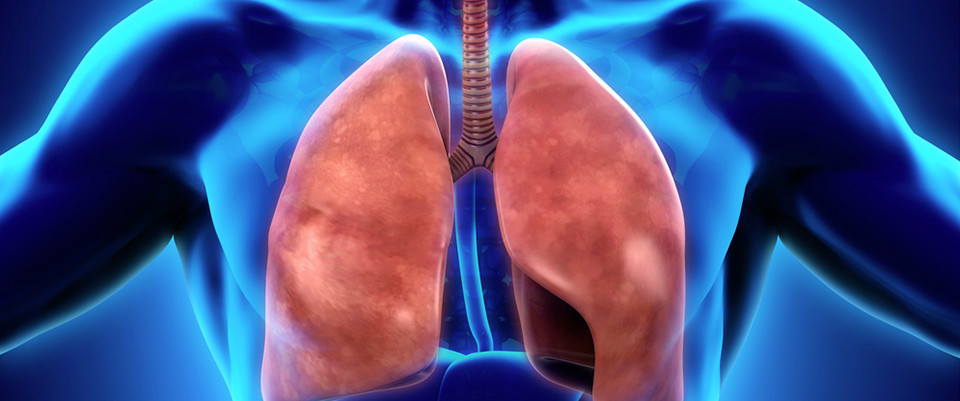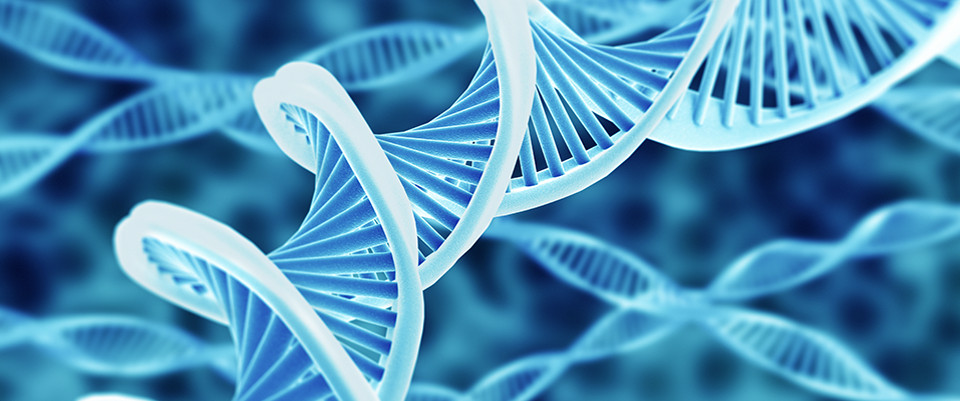PubMed
Prediction model for day 3 embryo implantation potential based on metabolites in spent embryo culture medium
BMC Pregnancy Childbirth. 2023 Jun 8;23(1):425. doi: 10.1186/s12884-023-05666-7.ABSTRACTBACKGROUND: Metabolites in spent embryo culture medium correlate with the embryo's viability. However, there is no widely accepted method using metabolite dada to predict successful implantation. We sought to combine metabolomic profiling of spent embryo culture medium and clinical variables to create an implantation prediction model as an adjunct to morphological screening of day 3 embryos.METHODS: This investigation was a prospective, nested case-control study. Forty-two day 3 embryos from 34 patients were transferred, and the spent embryo culture medium was collected. Twenty-two embryos implanted successfully, and the others failed. Metabolites in the medium relevant to implantation were detected and measured by Liquid Chromatography-Mass Spectrometry. Clinical signatures relevant to embryo implantation were subjected to univariate analysis to select candidates for a prediction model. Multivariate logistical regression of the clinical and metabolomic candidates was used to construct a prediction model for embryo implantation potential.RESULTS: The levels of 13 metabolites were significantly different between the successful and failed groups, among which five were most relevant and interpretable selected by Least Absolute Shrinkage and Selection Operator regression analysis. None of the clinical variables significantly affected day 3 embryo implantation. The most relevant and interpretable set of metabolites was used to construct a prediction model for day 3 embryo implantation potential with an accuracy of 0.88.CONCLUSIONS: Day 3 embryos'implantation potential could be noninvasively predicted by the spent embryo culture medium's metabolites measured by LC-MS. This approach may become a useful adjunct to morphological evaluation of day 3 embryos.PMID:37291503 | DOI:10.1186/s12884-023-05666-7
Data fusion and multivariate analysis for food authenticity analysis
Nat Commun. 2023 Jun 8;14(1):3309. doi: 10.1038/s41467-023-38382-z.ABSTRACTA mid-level data fusion coupled with multivariate analysis approach is applied to dual-platform mass spectrometry data sets using Rapid Evaporative Ionization Mass Spectrometry and Inductively Coupled Plasma Mass Spectrometry to determine the correct classification of salmon origin and production methods. Salmon (n = 522) from five different regions and two production methods are used in the study. The method achieves a cross-validation classification accuracy of 100% and all test samples (n = 17) have their origins correctly determined, which is not possible with single-platform methods. Eighteen robust lipid markers and nine elemental markers are found, which provide robust evidence of the provenance of the salmon. Thus, we demonstrate that our mid-level data fusion - multivariate analysis strategy greatly improves the ability to correctly identify the geographical origin and production method of salmon, and this innovative approach can be applied to many other food authenticity applications.PMID:37291121 | DOI:10.1038/s41467-023-38382-z
Association of Arachidonic Acid-Derived Lipid Mediators With Disease Severity in Patients With Relapsing and Progressive Multiple Sclerosis
Neurology. 2023 Jun 8:10.1212/WNL.0000000000207459. doi: 10.1212/WNL.0000000000207459. Online ahead of print.ABSTRACTBACKGROUND AND OBJECTIVES: Excessive activation of certain lipid mediator (LM) pathways play a role in the complex pathogenesis of multiple sclerosis (MS). However, the relation between bioactive LMs and different aspects of CNS-related pathophysiological processes remains largely unknown. Therefore, we here assessed the association of bioactive LMs belonging to the ω-3 / ω-6 lipid classes with clinical, biochemical (serum neurofilament light (sNfL) and serum glial fibrillary acidic protein (sGFAP)) parameters and MRI-based brain volumes in patients with MS (PwMS) and healthy controls (HC).METHODS: A targeted high performance liquid chromatography-tandem mass spectrometry (HPLC-MS/MS) approach was used on plasma samples of PwMS and HC of the Project Y cohort, a cross-sectional population based cohort that contains PwMS all born in 1966 in the Netherlands and age-matched HCs. LMs were compared between PwMS and HC and were correlated with levels of sNfL, sGFAP, disability (EDSS) and brain volumes. Finally, significant correlates were included in a backward multivariate regression model to identify which LMs best related to disability.RESULTS: The study sample consisted of 170 patients with relapsing remitting MS (RRMS), 115 patients with progressive MS (PMS) and 125 HC. LM profiles of patients with PMS significantly differed from RRMS and HC, in particular, patients with PMS showed elevated levels of several arachidonic acid (AA) derivatives. In particular 15-HETE (r = 0.24, p < 0.001), positively correlated (average r = 0.2, p < 0.05) with clinical and biochemical parameters such as EDSS and sNfL. In addition, higher 15-HETE levels were related to lower total brain (r = -0.24, p = 0.04) and deep gray matter volumes (r = -0.27, p = 0.02) in patients with PMS and higher lesion volume (r = 0.15, p = 0.03) in all PwMS.DISCUSSION: In PwMS of the same birth year, we show that ω-3 and -6 LMs are associated with disability, biochemical (sNfL, GFAP) and MRI measures. Furthermore, our findings indicate that particularly in patients with PMS, elevated levels of specific products of the AA pathway, such as 15-HETE, associate with neurodegenerative processes. Our findings highlight the potential relevance of ω-6 LMs in the pathogenesis of MS.PMID:37290971 | DOI:10.1212/WNL.0000000000207459
Association of Baseline Metabolomic Profiles With Incident Stroke and Dementia and With Imaging Markers of Cerebral Small Vessel Disease
Neurology. 2023 Jun 8:10.1212/WNL.0000000000207458. doi: 10.1212/WNL.0000000000207458. Online ahead of print.ABSTRACTBACKGROUND AND OBJECTIVES: Cerebral small vessel disease is a major cause of stroke and dementia. Metabolomics can help identify novel risk factors to better understand pathogenesis and predict disease progression and severity.METHODS: We analysed baseline metabolomics profiles from 118,021 UK Biobank participants. We examined cross-sectional associations of 325 metabolites with MRI markers of small vessel disease, evaluated longitudinal associations with incident stroke and dementia, and ascertained causal relationships using Mendelian randomization.RESULTS: In cross-sectional analyses, lower levels of apolipoproteins, free cholesterol, cholesteryl esters, fatty acids, lipoprotein particle concentrations, phospholipids, and triglycerides were associated with increased white matter microstructural damage on diffusion tensor MRI. In longitudinal analyses, lipoprotein subclasses of very large HDL were associated with increased risk of stroke, and acetate and 3-hydroxybutyrate were associated with increased risk of dementia. Mendelian randomization analyses identified strong evidence supporting causal relationships for many findings. A few metabolites had consistent associations across multiple analysis types. Increased total lipids in very large HDL and increased HDL particle size were associated with increased white matter damage (Lower FA: OR: 1.44, 95% CI: 1.07-1.95, and OR: 1.19, 95% CI: 1.06-1.34, respectively; MD: OR: 1.49, 95% CI: 1.11-2.01, and OR: 1.24, 95% CI: 1.11-1.40, respectively) and increased risk of incident all stroke (HR: 4.04, 95% CI: 2.13-7.64, and HR: 1.54, 95% CI: 1.20-1.98, respectively) and ischaemic stroke (HR: 3.12, 95% CI: 1.53-6.38; HR: 1.37, 95% CI: 1.04-1.81). Valine was associated with decreased MD (OR: 0.51, 95% CI: 0.30-0.88) and had a protective association with all-cause dementia (HR: 0.008, 95% CI: 0.002-0.035). Cholesterol in small HDL had an inverse association with incident all stroke (HR: 0.17, 95% CI: 0.08-0.39) and ischaemic stroke (HR: 0.19, 95% CI: 0.08-0.46) that was supported by evidence of a causal association with MRI-confirmed lacunar stroke (OR: 0.96, 95% CI: 0.93-0.99).DISCUSSION: In this large-scale metabolomics study, we found multiple metabolites associated with stroke, dementia, and MRI markers of small vessel disease. Further studies may help inform development of personalised prediction models and provide insights into mechanistic pathways and future treatment approaches.PMID:37290969 | DOI:10.1212/WNL.0000000000207458
Innovative thermally assisted on-line solid phase extraction-reversed phase liquid chromatography applied to targeted nutrimetabolomics in human biofluids
Anal Chim Acta. 2023 Aug 15;1269:341429. doi: 10.1016/j.aca.2023.341429. Epub 2023 May 25.ABSTRACTIn this study, the use of thermal desorption in on-line solid phase extraction coupled with reversed phase liquid chromatography (on-line SPE-LC) was for the first time proposed and demonstrated for the desorption of analytes strongly retained by multiple interaction polymeric sorbents. In detail, this analytical strategy was applied to the on-line SPE-LC targeted analysis of a model set of 34 human gut metabolites characterized by heterogeneous physicochemical properties (i.e., octanol-water partition coefficient in the range -0.3 - 3.4). The novel thermally assisted on-line SPE approach was investigated in comparison to conventional room temperature desorption strategies based on the use of (i) an optimized elution gradient or (ii) organic desorption followed by post-cartridge dilution. The thermally assisted desorption strategy has been shown to be better performing and suitable for the development of a reliable and sensitive method for the analysis of the model group of analytes in urine and serum. In more detail, under the optimized experimental conditions, the proposed method provided negligible matrix effects in both biofluids for almost all target analytes. Moreover, method quantification limits were in the ranges 0.026-7.2 μg L-1 and 0.033-23 μg L-1 for urine and serum, respectively, i.e., comparable to or lower than those reported in methods previously published.PMID:37290855 | DOI:10.1016/j.aca.2023.341429
OSCA-finder: Redefining the assay of kidney disease diagnostic through metabolomics and deep learning
Talanta. 2023 Jun 2;264:124745. doi: 10.1016/j.talanta.2023.124745. Online ahead of print.ABSTRACTLiquid chromatography-mass spectrometry (LC-MS) is a platform for urine and blood sample analysis. However, the high variability in the urine sample reduced the confidence of metabolite identification. Therefore, pre and post-calibration operations are inevitable to ensure an accurate urine biomarker analysis. In this study, the phenomenon of a higher creatinine concentration variable in ureteropelvic junction obstruction (UPJO) patient urine samples than in healthy people was revealed, indicating the urine biomarker discovery of UPJO patients is not adapted to the creatinine calibrate strategy. Therefore, we proposed a pipeline "OSCA-Finder" to reshape the urine biomarker analysis. First, to ensure a more stable peak shape and total ion chromatography, we applied the product of osmotic pressure and injection volume as a calibration principle and integrated it with an online mixer dilution. Therefore, we obtained the most peaks and identified more metabolites in a urine sample with peak area group CV<30%. A data-enhanced strategy was applied to reduce the overfit while training a neural network binary classifier with an accuracy of 99.9%. Finally, seven accurate urine biomarkers combined with a binary classifier were applied to distinguish UPJO patients from healthy people. The results show that the UPJO diagnostic strategy based on urine osmotic pressure calibration has more potential than ordinary strategies.PMID:37290332 | DOI:10.1016/j.talanta.2023.124745
A microbiota-modulated checkpoint directs immunosuppressive intestinal T cells into cancers
Science. 2023 Jun 9;380(6649):eabo2296. doi: 10.1126/science.abo2296. Epub 2023 Jun 9.ABSTRACTAntibiotics (ABX) compromise the efficacy of programmed cell death protein 1 (PD-1) blockade in cancer patients, but the mechanisms underlying their immunosuppressive effects remain unknown. By inducing the down-regulation of mucosal addressin cell adhesion molecule 1 (MAdCAM-1) in the ileum, post-ABX gut recolonization by Enterocloster species drove the emigration of enterotropic α4β7+CD4+ regulatory T 17 cells into the tumor. These deleterious ABX effects were mimicked by oral gavage of Enterocloster species, by genetic deficiency, or by antibody-mediated neutralization of MAdCAM-1 and its receptor, α4β7 integrin. By contrast, fecal microbiota transplantation or interleukin-17A neutralization prevented ABX-induced immunosuppression. In independent lung, kidney, and bladder cancer patient cohorts, low serum levels of soluble MAdCAM-1 had a negative prognostic impact. Thus, the MAdCAM-1-α4β7 axis constitutes an actionable gut immune checkpoint in cancer immunosurveillance.PMID:37289890 | DOI:10.1126/science.abo2296
MetaPro: a web-based metabolomics application for LC-MS data batch inspection and library curation
Metabolomics. 2023 Jun 8;19(6):57. doi: 10.1007/s11306-023-02018-6.ABSTRACTINTRODUCTION: Metabolomics analysis based on liquid chromatography-mass spectrometry (LC-MS) has been a prevalent method in the metabolic field. However, accurately quantifying all the metabolites in large metabolomics sample cohorts is challenging. The analysis efficiency is restricted by the abilities of software in many labs, and the lack of spectra for some metabolites also hinders metabolite identification.OBJECTIVES: Develop software that performs semi-targeted metabolomics analysis with an optimized workflow to improve quantification accuracy. The software also supports web-based technologies and increases laboratory analysis efficiency. A spectral curation function is provided to promote the prosperity of homemade MS/MS spectral libraries in the metabolomics community.METHODS: MetaPro is developed based on an industrial-grade web framework and a computation-oriented MS data format to improve analysis efficiency. Algorithms from mainstream metabolomics software are integrated and optimized for more accurate quantification results. A semi-targeted analysis workflow is designed based on the concept of combining artificial judgment and algorithm inference.RESULTS: MetaPro supports semi-targeted analysis workflow and functions for fast QC inspection and self-made spectral library curation with easy-to-use interfaces. With curated authentic or high-quality spectra, it can improve identification accuracy using different peak identification strategies. It demonstrates practical value in analyzing large amounts of metabolomics samples.CONCLUSION: We offer MetaPro as a web-based application characterized by fast batch QC inspection and credible spectral curation towards high-throughput metabolomics data. It aims to resolve the analysis difficulty in semi-targeted metabolomics.PMID:37289291 | DOI:10.1007/s11306-023-02018-6
Mitochondrial damage-induced abnormal glucose metabolism with ageing in the hippocampus of APP/PS1 mice
Metabolomics. 2023 Jun 8;19(6):56. doi: 10.1007/s11306-023-02023-9.ABSTRACTINTRODUCTION: Accumulation of β-amyloid (Aβ) in neurons of patients with Alzheimer's disease (AD) inhibits the activity of key enzymes in mitochondrial metabolic pathways, triggering mitochondrial dysfunction, which plays an important role in the onset and development of AD. Mitophagy is a process whereby dysfunctional or damaged mitochondria are removed from the cell. Aberrant mitochondrial metabolism may hinder mitophagy, promote autophagosome accumulation, and lead to neuronal death.OBJECTIVES: The aim of this experiment is to explore the mechanism of neuronal mitochondria damage in the hippocampus of different age APP/PS1 double transgenic AD mice, and to explore the related metabolites and metabolic pathways for further understanding of the pathogenesis, so as to provide new ideas and strategies for the treatment of AD.METHODS: In this study, 24 APP/PS1(APPswe/PSEN1dE9) mice were divided into 3, 6, 9, and 12-month-old groups, and 6-month-old wild-type C57BL/6 mice were as controls. The Morris water maze test was used to evaluate learning and memory. Levels of Aβ were detected by immunohistochemistry. Electron microscopy was used to observe mitochondrial damage and autophagosome accumulation. Western blot was for measuring LC3, P62, PINK1, Parkin, Miro1, and Tom 20 protein expression levels. Gas chromatography coupled with mass spectrometry was used to screen differentially abundant metabolites.RESULTS: The results showed that with the increase of age in APP/PS1 mice, cognitive impairment, hippocampal neuron mitochondrial damage, and autophagosome accumulation all increased. Furthermore, enhanced mitophagy and impaired mitochondrial clearance leading to metabolic abnormalities were observed with ageing in APP/PS1 mouse hippocampus. Especially, abnormal accumulation of succinic acid and citric acid in the Krebs cycle was observed.CONCLUSION: This study investigated the abnormal glucose metabolism associated with age-related damage to mitochondria in the hippocampus of APP/PS1 mice. These findings provide new insights into the pathogenesis of AD.PMID:37289288 | DOI:10.1007/s11306-023-02023-9
The metabolic contribution of SKN-1/Nrf2 to the lifespan of Caenorhabditis elegans
Metabolomics. 2023 Jun 8;19(6):58. doi: 10.1007/s11306-023-02022-w.ABSTRACTBACKGROUND AND AIMS: SKN-1, a C. elegans transcription factor analogous to the mammalian NF-E2-related factor (Nrf2), has been known to promote oxidative stress resistance aiding nematodes' longevity. Although SKN-1's functions suggest its implication in lifespan modulation through cellular metabolism, the actual mechanism of how metabolic rearrangements contribute to SKN-1's lifespan modulation has yet to be well characterized. Therefore, we performed the metabolomic profiling of the short-lived skn-1-knockdown C. elegans.METHODS: We analyzed the metabolic profile of the skn-1-knockdown worms with nuclear magnetic resonance (NMR) spectroscopy and liquid chromatography-tandem mass spectrometry (LC-MS/MS) and obtained distinctive metabolomic profiles compared to WT worms. We further extended our study with gene expression analysis to examine the expression level of genes encoding all metabolic enzymes.RESULTS: A significant increase in the phosphocholine and AMP/ATP ratio, potential biomarkers of aging, was observed, accompanied by a decrease in the transsulfuration metabolites, NADPH/NADP+ ratio, and total glutathione (GSHt), which are known to be involved in oxidative stress defense. skn-1-RNAi worms also exhibited an impairment in the phase II detoxification system, confirmed by the lower conversion rate of paracetamol to paracetamol-glutathione. By further examining the transcriptomic profile, we found a decrease in the expression of cbl-1, gpx, T25B9.9, ugt, and gst, which are involved in GSHt and NADPH synthesis as well as in the phase II detoxification system.CONCLUSION: Our multi-omics results consistently revealed that the cytoprotective mechanisms, including cellular redox reactions and xenobiotic detoxification system, contribute to the roles of SKN-1/Nrf2 in the lifespan of worms.PMID:37289273 | DOI:10.1007/s11306-023-02022-w
Metabolomic Analysis of Polymicrobial Wound Infections and an Associated Adhesive Bandage
J Am Soc Mass Spectrom. 2023 Jun 8. doi: 10.1021/jasms.3c00066. Online ahead of print.ABSTRACTConcerns about ion suppression, spectral contamination, or interference have led to avoidance of polymers in mass spectrometry (MS)-based metabolomics. This avoidance, however, has left many biochemical fields underexplored, including wounds, which are often treated with adhesive bandages. Here, we found that despite previous concerns, the addition of an adhesive bandage can still result in biologically informative MS data. Initially, a test LC-MS analysis was performed on a mixture of known chemical standards and a polymer bandage extract. Results demonstrated successful removal of many polymer-associated features through a data processing step. Furthermore, the bandage presence did not interfere with metabolite annotation. This method was then implemented in the context of murine surgical wound infections covered with an adhesive bandage and inoculated with Staphylococcus aureus, Pseudomonas aeruginosa, or a 1:1 mix of these pathogens. Metabolites were extracted and analyzed by LC-MS. On the bandage side, we observed a greater impact of infection on the metabolome. Distance analysis showed significant differences between all conditions and demonstrated that coinfected samples were more similar to S. aureus-infected samples compared to P. aeruginosa-infected samples. We also found that coinfection was not merely a summative effect of each monoinfection. Overall, these results represent an expansion of LC-MS-based metabolomics to a novel, previously under-investigated class of samples, leading to actionable biological information.PMID:37289200 | DOI:10.1021/jasms.3c00066
Omics in acute-on-chronic liver failure
Liver Int. 2023 Jun 8. doi: 10.1111/liv.15634. Online ahead of print.ABSTRACTAcute-on-chronic liver failure (ACLF) is a critical syndrome that develops in patients with chronic liver disease and is characterized by acute decompensation, single- or multiple-organ failure and high short-term mortality. Over the past few decades, ACLF has been progressively recognized as an independent clinical entity, and several criteria and prognostic scores have been proposed and validated by different scientific societies. However, controversies still exist in some aspects across regions, which mainly involve whether the definition of underlying liver diseases should include cirrhosis and non-cirrhosis. The pathophysiology of ACLF is complicated and remains unclear, although accumulating evidence based on different aetiologies of ACLF shows that it is closely associated with intense systemic inflammation and immune-metabolism disorder, which result in mitochondrial dysfunction and microenvironment imbalance, leading to disease development and organ failure. In-depth insight into the biological pathways involved in the mechanisms of ACLF and potential mechanistic targets that improve patient survival still needs to be investigated. Omics-based analytical techniques, including genomics, transcriptomics, proteomics, metabolomics and microbiomes, have developed rapidly and can offer novel insights into the essential pathophysiologic process of ACLF. In this paper, we briefly reviewed and summarized the current knowledge and recent advances in the definitions, criteria and prognostic assessments of ACLF; we also described the omics techniques and how omics-based analyses have been applied to investigate and characterize the biological mechanisms of ACLF and identify potential predictive biomarkers and therapeutic targets for ACLF. We also outline the challenges, future directions and limitations presented by omics-based analyses in clinical ACLF research.PMID:37288724 | DOI:10.1111/liv.15634
Untargeted MS<sup><em>n</em></sup>-Based Monitoring of Glucuronides in Fish: Screening Complex Mixtures for Contaminants with Biological Relevance
ACS ES T Water. 2022 Dec 9;2(12):2481-2490. doi: 10.1021/acsestwater.2c00310.ABSTRACTThe complexity of contaminant mixtures in surface waters has presented long-standing challenges to the assessment of risks to human health and the environment. As a result, novel strategies for both identifying contaminants that have not been routinely monitored through targeted methods and prioritizing detected compounds with respect to their biological relevance are needed. Tracking biotransformation products in biofluids and tissues in an untargeted fashion facilitates the identification of chemicals taken up by the resident species (e.g., fish), so by default ensuring that detected compounds are biologically relevant in terms of exposure. In this study, we investigated xenobiotic glucuronidation, which is arguably the most important phase II metabolism pathway for many pharmaceuticals, pesticides, and other environmental contaminants. The application of an untargeted high-resolution mass spectrometry-based approach tentatively revealed the presence of over 70 biologically relevant xenobiotics in bile collected from male and female fathead minnows exposed to wastewater treatment plant effluents. The majority of these were not targets of conventional contaminant monitoring. These results highlight the utility of biologically based untargeted screening methods when evaluating chemical contaminants in complex environmental mixtures.PMID:37288388 | PMC:PMC10243500 | DOI:10.1021/acsestwater.2c00310
Corrigendum to "Modeling signaling pathways in biology with MaBoSS: From one single cell to a dynamic population of heterogeneous interacting cells" [Comput. Struct. Biotechnol. 20 (2022) 5661-5671]
Comput Struct Biotechnol J. 2023 Jun 1;21:3158. doi: 10.1016/j.csbj.2023.05.021. eCollection 2023.ABSTRACT[This corrects the article DOI: 10.1016/j.csbj.2022.10.003.].PMID:37287810 | PMC:PMC10242621 | DOI:10.1016/j.csbj.2023.05.021
Unravelling the molecular mechanism underlying drought stress response in chickpea <em>via</em> integrated multi-omics analysis
Front Plant Sci. 2023 May 23;14:1156606. doi: 10.3389/fpls.2023.1156606. eCollection 2023.ABSTRACTDrought stress affects growth and productivity significantly in chickpea. An integrated multi-omics analysis can provide a better molecular-level understanding of drought stress tolerance. In the present study, comparative transcriptome, proteome and metabolome analyses of two chickpea genotypes with contrasting responses to drought stress, ICC 4958 (drought-tolerant, DT) and ICC 1882 (drought-sensitive, DS), was performed to gain insights into the molecular mechanisms underlying drought stress response/tolerance. Pathway enrichment analysis of differentially abundant transcripts and proteins suggested the involvement of glycolysis/gluconeogenesis, galactose metabolism, and starch and sucrose metabolism in the DT genotype. An integrated multi-omics analysis of transcriptome, proteome and metabolome data revealed co-expressed genes, proteins and metabolites involved in phosphatidylinositol signaling, glutathione metabolism and glycolysis/gluconeogenesis pathways, specifically in the DT genotype under drought. These stress-responsive pathways were coordinately regulated by the differentially abundant transcripts, proteins and metabolites to circumvent the drought stress response/tolerance in the DT genotype. The QTL-hotspot associated genes, proteins and transcription factors may further contribute to improved drought tolerance in the DT genotype. Altogether, the multi-omics approach provided an in-depth understanding of stress-responsive pathways and candidate genes involved in drought tolerance in chickpea.PMID:37287713 | PMC:PMC10242046 | DOI:10.3389/fpls.2023.1156606
Multi-omics analysis reveals changes in tryptophan and cholesterol metabolism before and after sexual maturation in captive macaques
BMC Genomics. 2023 Jun 7;24(1):308. doi: 10.1186/s12864-023-09404-3.ABSTRACTRhesus macaques (Macaca mulatta, RMs) are widely used in sexual maturation studies due to their high genetic and physiological similarity to humans. However, judging sexual maturity in captive RMs based on blood physiological indicators, female menstruation, and male ejaculation behavior can be inaccurate. Here, we explored changes in RMs before and after sexual maturation based on multi-omics analysis and identified markers for determining sexual maturity. We found that differentially expressed microbiota, metabolites, and genes before and after sexual maturation showed many potential correlations. Specifically, genes involved in spermatogenesis (TSSK2, HSP90AA1, SOX5, SPAG16, and SPATC1) were up-regulated in male macaques, and significant changes in gene (CD36), metabolites (cholesterol, 7-ketolithocholic acid, and 12-ketolithocholic acid), and microbiota (Lactobacillus) related to cholesterol metabolism were also found, suggesting the sexually mature males have stronger sperm fertility and cholesterol metabolism compared to sexually immature males. In female macaques, most differences before and after sexual maturity were related to tryptophan metabolism, including changes in IDO1, IDO2, IFNGR2, IL1Β, IL10, L-tryptophan, kynurenic acid (KA), indole-3-acetic acid (IAA), indoleacetaldehyde, and Bifidobacteria, indicating that sexually mature females exhibit stronger neuromodulation and intestinal immunity than sexually immature females. Cholesterol metabolism-related changes (CD36, 7-ketolithocholic acid, 12-ketolithocholic acid) were also observed in female and male macaques. Exploring differences before and after sexual maturation through multi-omics, we identified potential biomarkers of sexual maturity in RMs, including Lactobacillus (for males) and Bifidobacterium (for females) valuable for RM breeding and sexual maturation research.PMID:37286946 | DOI:10.1186/s12864-023-09404-3
Association analysis of gut microbiota-metabolites-neuroendocrine changes in male rats acute exposure to simulated altitude of 5500 m
Sci Rep. 2023 Jun 7;13(1):9225. doi: 10.1038/s41598-023-35573-y.ABSTRACTHyperactivation of hypothalamic-pituitary-adrenal (HPA) axis and hypothalamic-pituitary-thyroid (HPT) axis were found in acute high altitude challenge, but the role of gut microbiota and metabolites is unknown. We utilized adult male Sprague-Dawley rats at a simulated altitude of 5500 m for 3 days in a hypobaric-hypoxic chamber. ELISA and metabolomic analyses of serum and 16S rRNA and metabolomic analyses of fecal samples were then performed. Compared with the normoxic group, serum corticotropin-releasing hormone (CRH), adrenocorticotropic hormone (ACTH), corticosterone (CORT), and thyroxine (tT4) were increased in the hypoxia group, whereas thyrotropin-releasing hormone (TRH) was decreased. Bacteroides, Lactobacillus, Parabacteroides, Butyricimonas, SMB53, Akkermansia, Phascolarctobacterium, and Aerococcus were enriched in hypoxia group, whereas [Prevotella], Prevotella, Kaistobacter, Salinibacterium, and Vogesella were enriched in normoxic group. Metabolomic analysis indicated that acute hypoxia significantly affected fecal and serum lipid metabolism. In addition, we found five fecal metabolites may mediate the cross-talk between TRH, tT4, and CORT with [Prevotella], Kaistobacter, Parabacteroides, and Aerococcus, and 6 serum metabolites may mediate the effect of TRH and tT4 on [Prevotella] and Kaistobacter by causal mediation analysis. In conclusion, this study provides new evidence that key metabolites mediate the cross-talk between gut microbiota with HPA and HPT axis under acute hypobaric hypoxia challenge.PMID:37286697 | DOI:10.1038/s41598-023-35573-y
Large scale proteomic studies create novel privacy considerations
Sci Rep. 2023 Jun 7;13(1):9254. doi: 10.1038/s41598-023-34866-6.ABSTRACTPrivacy protection is a core principle of genomic but not proteomic research. We identified independent single nucleotide polymorphism (SNP) quantitative trait loci (pQTL) from COPDGene and Jackson Heart Study (JHS), calculated continuous protein level genotype probabilities, and then applied a naïve Bayesian approach to link SomaScan 1.3K proteomes to genomes for 2812 independent subjects from COPDGene, JHS, SubPopulations and InteRmediate Outcome Measures In COPD Study (SPIROMICS) and Multi-Ethnic Study of Atherosclerosis (MESA). We correctly linked 90-95% of proteomes to their correct genome and for 95-99% we identify the 1% most likely links. The linking accuracy in subjects with African ancestry was lower (~ 60%) unless training included diverse subjects. With larger profiling (SomaScan 5K) in the Atherosclerosis Risk Communities (ARIC) correct identification was > 99% even in mixed ancestry populations. We also linked proteomes-to-proteomes and used the proteome only to determine features such as sex, ancestry, and first-degree relatives. When serial proteomes are available, the linking algorithm can be used to identify and correct mislabeled samples. This work also demonstrates the importance of including diverse populations in omics research and that large proteomic datasets (> 1000 proteins) can be accurately linked to a specific genome through pQTL knowledge and should not be considered unidentifiable.PMID:37286633 | DOI:10.1038/s41598-023-34866-6
Sex differences in associations of plasma metabolites with blood pressure and heart rate variability: The HELIUS study
Atherosclerosis. 2023 May 28:S0021-9150(23)00210-1. doi: 10.1016/j.atherosclerosis.2023.05.016. Online ahead of print.ABSTRACTBACKGROUND AND AIMS: Since plasma metabolites can modulate blood pressure (BP) and vary between men and women, we examined sex differences in plasma metabolite profiles associated with BP and sympathicovagal balance. Our secondary aim was to investigate associations between gut microbiota composition and plasma metabolites predictive of BP and heart rate variability (HRV).METHODS: From the HELIUS cohort, we included 196 women and 173 men. Office systolic BP and diastolic BP were recorded, and heart rate variability (HRV) and baroreceptor sensitivity (BRS) were calculated using finger photoplethysmography. Plasma metabolomics was measured using untargeted LC-MS/MS. Gut microbiota composition was determined using 16S sequencing. We used machine learning models to predict BP and HRV from metabolite profiles, and to predict metabolite levels from gut microbiota composition.RESULTS: In women, best predicting metabolites for systolic BP included dihomo-lineoylcarnitine, 4-hydroxyphenylacetateglutamine and vanillactate. In men, top predictors included sphingomyelins, N-formylmethionine and conjugated bile acids. Best predictors for HRV in men included phenylacetate and gentisate, which were associated with lower HRV in men but not in women. Several of these metabolites were associated with gut microbiota composition, including phenylacetate, multiple sphingomyelins and gentisate.CONCLUSIONS: Plasma metabolite profiles are associated with BP in a sex-specific manner. Catecholamine derivatives were more important predictors for BP in women, while sphingomyelins were more important in men. Several metabolites were associated with gut microbiota composition, providing potential targets for intervention.PMID:37286456 | DOI:10.1016/j.atherosclerosis.2023.05.016
Integrated network pharmacology and gut microbiome analysis to reveal the mechanism of Qu-Zhuo-Tong-Bi decoction against hyperuricemia and gout
J Ethnopharmacol. 2023 Jun 5:116736. doi: 10.1016/j.jep.2023.116736. Online ahead of print.ABSTRACTETHNOPHARMACOLOGICAL RELEVANCE: Qu-zhuo-tong-bi decoction (QZTBD) is a classic Chinese herbal medicine that has shown therapeutic efficacy in clinical practice against hyperuricemia and gout. However, the potential mechanisms of QZTBD remain poorly investigated.AIM OF THE STUDY: To assess the therapeutic effects of QZTBD on hyperuricemia and gout and to reveal its mechanisms of action.MATERIALS AND METHODS: A Uox-KO mouse model of hyperuricemia and gout was established, and QZTBD was administered at a dosage of 18.0 g/kg/d. Throughout the experimental period, the effects of QZTBD on gout symptoms were monitored and analyzed. The integrated network pharmacology and gut microbiota analysis strategy was conducted to explore the mechanism of QZTBD in the treatment of hyperuricemia and gout. Targeted metabolomic analysis was performed to investigate the variation of amino acids and Spearman's rank correlation analysis was conducted to reveal the relationship between the discrepant bacterial genera and the altered amino acid. Flow cytometry was utilized to analysis the proportion of Th17 and Treg cells, and the production of pro-inflammatory cytokines was measured by ELISA. qRT-PCR and Western blot assay were applied to detect the expression of mRNA and protein respectively. Autodock vina 1.1.2 was used to evaluate the docking interactions.RESULTS: QZTBD treatment showed remarkable efficacy against hyperuricemia and gout with respect to attenuation of disease activity metrics through gut microbiome recovery and intestinal immune homeostasis. The administration of QZTBD significantly elevated the abundance of Allobaculum and Candidatus sacchairmonas, corrected the aberrant amino acid patterns, repaired the impaired intestinal barrier, restored the balance of Th17/Treg cells via PI3K-AKT-mTOR pathway, and reduced the levels of inflammatory cytokines such as IL-1β, IL-6, TNF-α and IL-17. Fecal microbiota transplantation from QZTBD treated mice demonstrated convincing evidence of efficacy and mechanism of QZTBD.CONCLUSION: Taken together, our study explores the therapeutic mechanism of an effective herbal formula, QZTBD, for gout treatment through remodeling gut microbiome and regulating the differentiation of CD4+ T cells via PI3K-AKT-mTOR pathway.PMID:37286117 | DOI:10.1016/j.jep.2023.116736











